Could ESI Xjam be your new favourite pad MIDI controller?
Pad controllers have to endure some quite rough treatment, but Xjam is so small and dainty it hardly looks up to the job. Appearances can be deceptive, though…
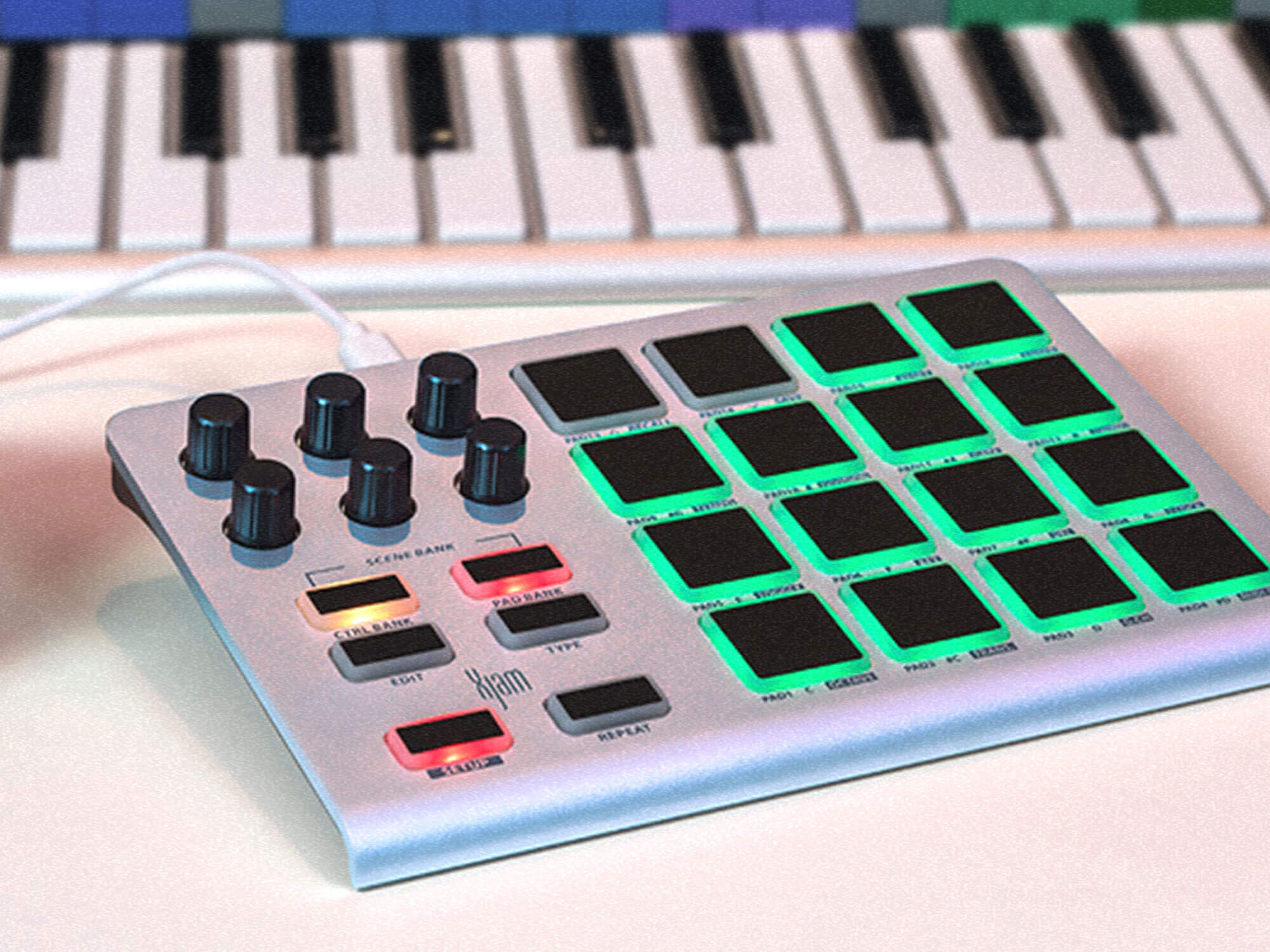
Review Overview
Our rating
8
Our verdict
⊕ Solid build and elegant design
⊕ Compact pad layout is very comfortable to play
⊕ Large number of configurations can be stored and recalled
⊕ Easy-to-use configuration software
⊖ Encoders don’t currently support RPN or NRPN messages
⊖ Endless encoders aren’t reliable pitch bend controllers
Having joined forces with California-based Artesia Pro – home to CME’s Xkey line of compact keyboard controllers – German music manufacturer ESI was tasked with creating a new pad controller to complement the size and stylish Xkey models. The result is Xjam.
Compact controller
With its smart, low-profile and rock-solid matt aluminium enclosure, Xjam certainly gives a glowing first impression. Design and dimensions mirror those of the Xkey and make for a sleek, highly portable pairing when the two are teamed together. However, unlike the Xkey, whose computer-keyboard-style key mechanism feels very different to a standard MIDI controller’s keys, Xjam’s 16 rubberised trigger pads feel as good as any we’ve come across outside of old-school Akai offerings.
The unit connects to your computer or device via USB-C, which also powers the unit, and there’s also a mini-jack MIDI Out port (no mini-jack to DIN converter is included) so the Xjam can be connected directly to hardware instruments. Next to these ports is an additional mini-jack socket that can be linked to a footswitch for an additional trigger source.
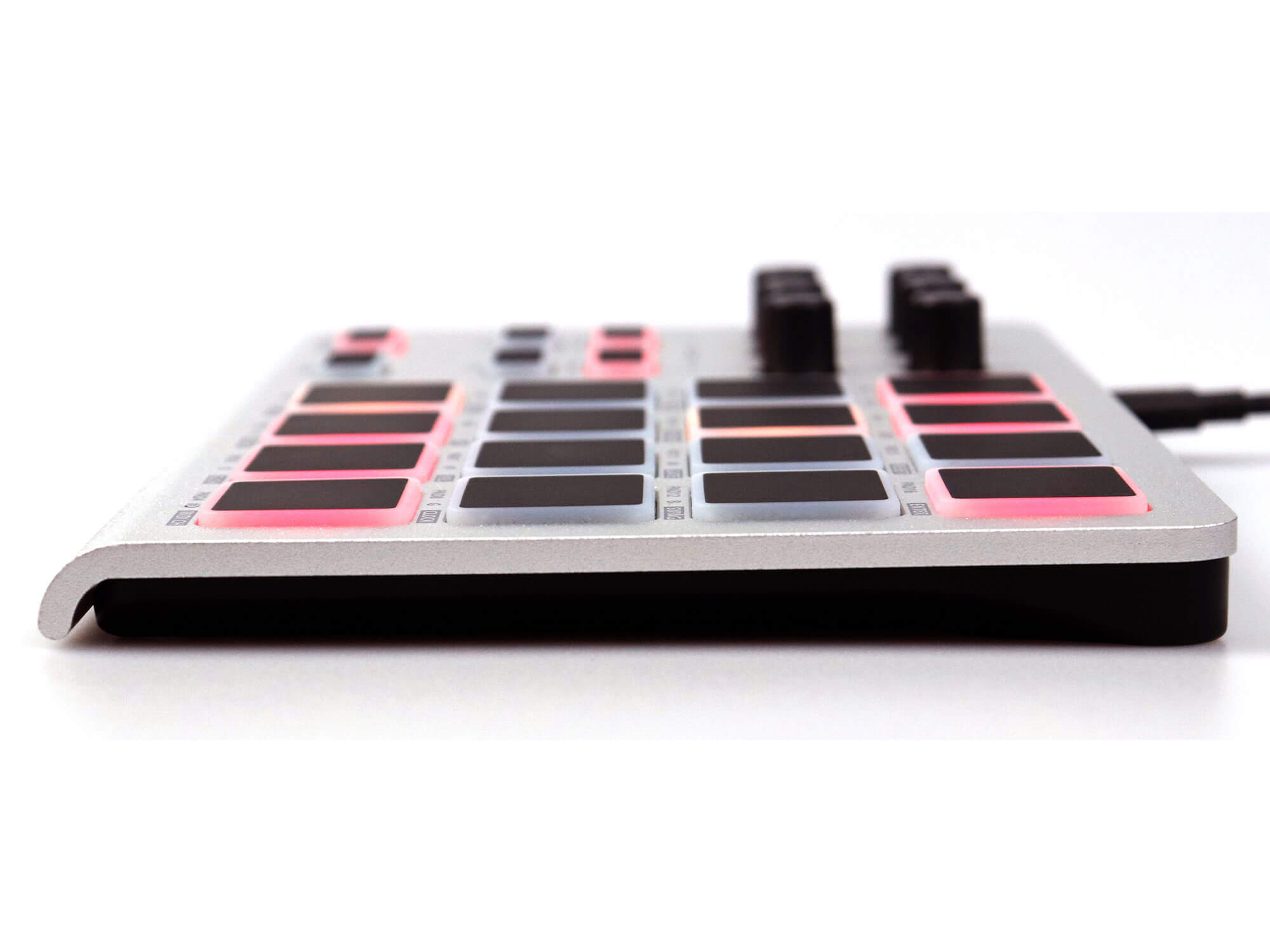
Pad control
The unit’s form factor means that the pads are comparatively small and closely bunched in a 4×4 grid. But we rather enjoy this; they fall easily under your fingers without requiring much hand movement, yet are still large enough to strike positively and accurately.
Xjam’s pads have a three-colour backlight which, when playing, reflects the velocity at which a pad was struck: green for gentle, yellow for medium and red for firm. As well as velocity sensitivity, the pads also recognise aftertouch pressure, which can be transmitted either as channel aftertouch or note-specific polyphonic pressure messages.
Alongside the primary function of triggering notes, each pad can be configured to send program change, MIDI continuous controller (CC) and MIDI machine control (MMC) messages. When sending controller messages, a pad can send either user-defined high and low values in response to note on and off messages, respectively, or alternatively, use the strike velocity as the value of the controller message.
Producers and musicians can be very exacting about the sensitivity and responsiveness of pad controllers, so a nice feature of Xjam is that it allows the strike and aftertouch response of each pad to be fine-tuned. This includes setting and customising velocity curves, setting hit and aftertouch thresholds, defining a delay time before a pad can be re-triggered, and more.
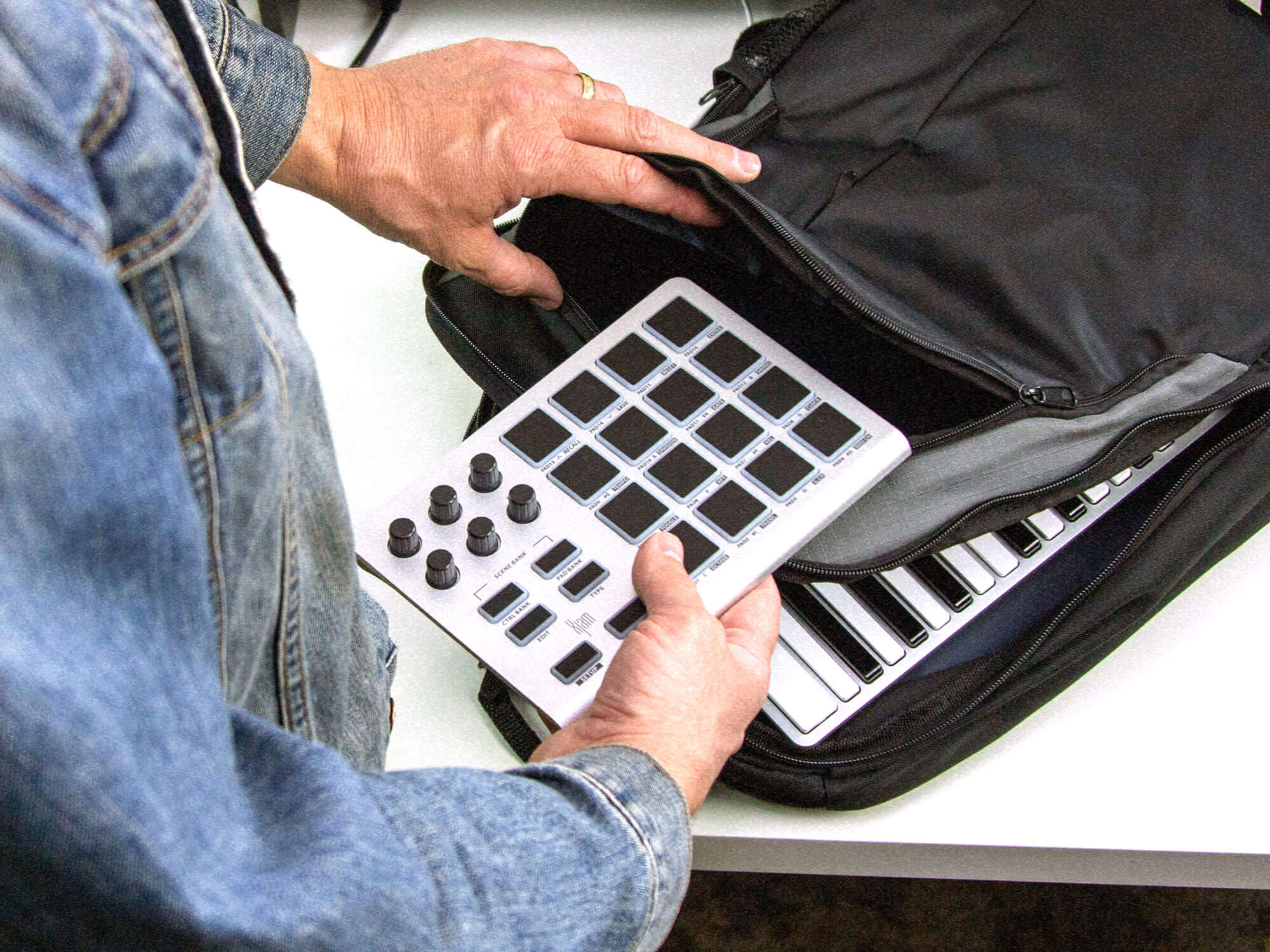
Rotary encoders
Next to Xjam’s pads are a set of six controller knobs. These have the same sturdy, well-built feel of the whole unit, and are continuous rotary encoders, which is something we always approve of.
That said, the response of the controller knobs leaves much to be desired, with an acceleration characteristic that can break any feeling of direct control over a parameter: Turn slowly and the linked parameter only advances at a snail’s pace; turn faster and the linked parameter leaps ahead. ESI is aware of this problem, though – a fix is in the pipeline and will be released as a firmware update within the coming weeks.
The rotaries send continuous controller MIDI messages, as you would expect, but cannot send RPN, NRPN or system-exclusive messages. The latter is forgivable given system exclusive isn’t widely used nowadays, but the lack of support for RPN and NRPN messages is a more glaring omission, especially for those who need to control hardware instruments. Happily, ESI is considering adding support for RPN and NRPN in a future update.
What the rotaries can be configured to send – as an alternative to controller messages – is program change, pitch bend and channel aftertouch. Program change is fine, but trying to control pitch bend using encoders that have no centre detent to mark the zero point is difficult, to say the least.
As for sending aftertouch via a rotary controller, we’re left wondering: ‘Why?!’ Xjam isn’t the only controller that can do this but we struggle to see much point in it, especially given the excellent aftertouch control offered by the pads.
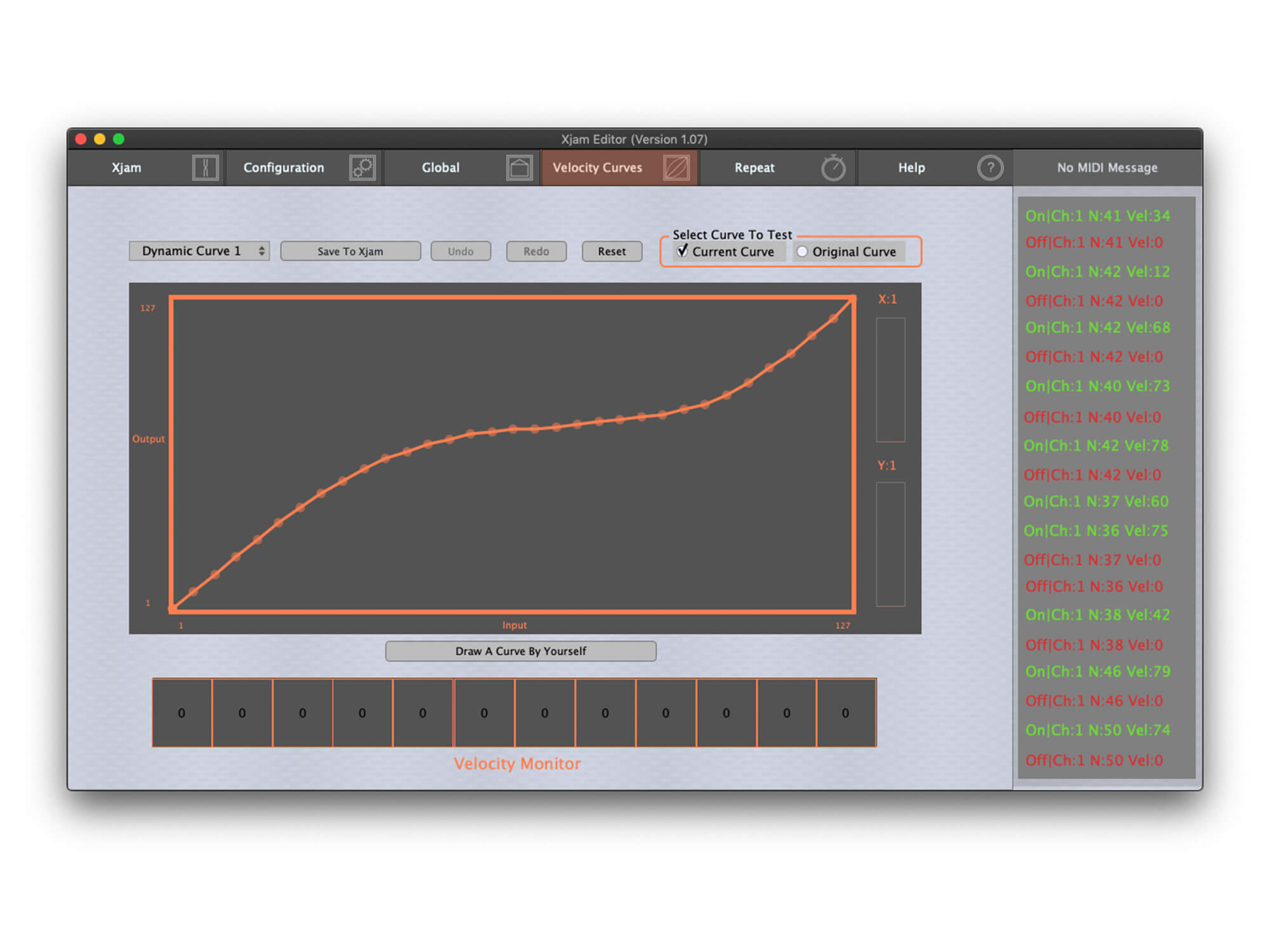
Making a scene
Xjam arranges its pad and controller configurations into banks and scenes. Each scene stores three banks of pad and controller assignments, and you can switch the pad banks and controller banks independently of each other, which is very useful. This gives a total of 48 pads and 18 rotaries per scene. With 16 scenes available in total – allowing for 768 pad assignments and 288 rotary encoder assignments – this makes for incredible versatility.
You can set up pad and controller configurations directly via the Xjam. The method is a little bit arcane however; press this pad to access a parameter, then another to change the current setting, and yet another to store the change, with the only visual feedback coming from the pads lighting in different colours. Some labelling beneath the pads helps here, and the procedure follows a consistent logic, so it’s not too challenging to get the hang of. If you don’t like the idea of poking around on the unit to change configurations, there’s an easy-to-use software editor for macOS, Windows and iPadOS.
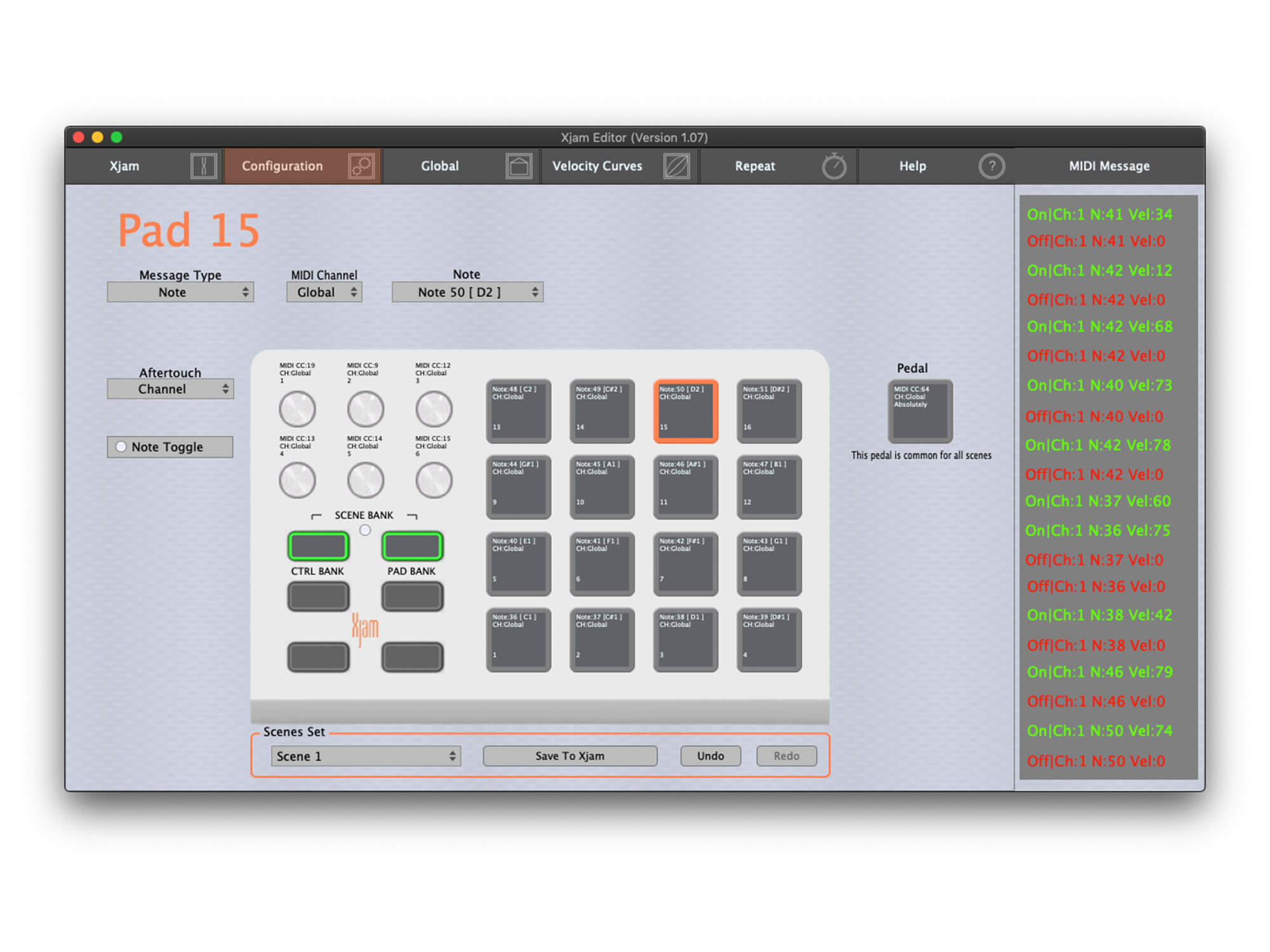
Solid elegance
The unassuming footprint of Xjam lends itself in particular to iPad-based and mobile producers, while the unit’s robustness gives confidence that it will survive being lugged around in a backpack or laptop bag. But Xjam will serve well in static studio setups too, with its size making it easy to position – on top of a full-sized keyboard controller, alongside a mini keyboard controller – and easy to tuck out of the way when not in use.
Xjam’s price tag is competitive too, but there’s nothing cheap about the hardware; its pads are firm and responsive with a very comfortable layout. And though the rotary encoder response may not satisfy at present, they do feel useful. Once that firmware update arrives they will be every bit as satisfying as the pads, and it will become very hard not to love Xjam.
Learn more at esi-audio.com
Key features
Pad controller for Mac, Windows and iPadOS
USB-C connection to host computer, with USB-C to USB-A cable included
MIDI out via 3.5mm mini-jack (mini-jack to DIN adapter not provided)
Bus powered via USB input
16 velocity- and aftertouch-sensitive backlit pads
Pads send note, continuous controller or MIDI machine control messages
Pad aftertouch can be set to channel aftertouch or polyphonic pressure
Pad repeat button
6 continuous rotary encoders
Encoders send continuous controller, program change, pitch bend or aftertouch messages
3 banks of pads and 3 banks of rotaries per scene (16 scenes total)
Xjam Edit app available for Mac, Windows and iPadOS
Includes licences for Bitwig 8-Track, Steinberg WaveLab LE 10 and Steinberg Cubasis LE 3